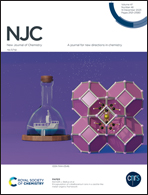The roles of the oxygen vacancies caused by the ion doping method in catalytic materials and their applications in advanced oxidation processes
Abstract
Optimising advanced oxidation processes (AOPs) by creating oxygen vacancies (OVs) on metal oxides via doping with different ions to improve catalyst activity is currently a significant research field. OVs produced by doping have the potential to substantially reduce the reaction energy barrier, and impact the reaction products with high selectivity. However, there is currently a lack of reviews on the utilization of dopant ions to induce OVs and the application of dopant-induced OVs in AOPs. This paper provides a systematic overview of the selection of dopant ions for the construction of OVs by doping. Additionally, we present two theoretical explanations highlighting the ability of doping to obtain OVs, explaining how doping can be used to design catalysts with ample OVs. Next, we methodically illustrate the kinetic and thermodynamic interactions between OVs and dopant ions. We also discuss the direct and indirect destruction of OVs by environmental factors that influence dopant elements in AOPs. Finally, the paper concludes with a detailed account of the application of OVs induced by doping in typical advanced oxidation techniques, such as Fenton-like oxidation, activated persulfate oxidation, catalytic ozonation, photocatalysis and electrochemical oxidation. Additionally, potential avenues of future research are suggested.

- This article is part of the themed collection: 2023 Focus and Perspective articles


 Please wait while we load your content...
Please wait while we load your content...